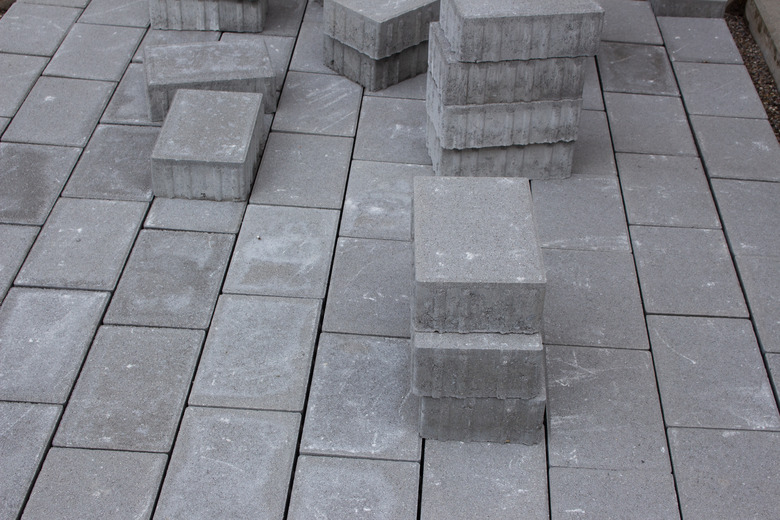Do I Need To Lay Gravel Before Pavers?
Paving stones can beautify your patio, driveway, walkway or garden, and with some careful planning, you can complete projects like these on your own. Do you need to lay gravel before pavers? You don't always need to do so, but it may be helpful depending on the way you are using the pavers.
Tip
You don't have to lay gravel before pavers, but doing so can be beneficial to your project.
Preparing the Area Properly
Preparing the Area Properly
Pavers are available in concrete, brick and natural stone and in a wide variety of colors. In fact, choosing the materials can take longer than doing the work of installing the pavers in your yard or garden. Once you have made your choices, you can probably complete the project in one weekend.
Pavers can be laid down over plain dirt, in mortar or on top of a bed made of sand and gravel. It is not always necessary to put down a foundation, but it is generally recommended, especially if the ground is not solid or even.
If the ground does not freeze in the winter and there is good drainage, you can try setting the pavers right into the dirt. To prep the area, you will need a fabric weed barrier, rake, shovel and tamper. Remove any weeds with their roots, rake the dirt evenly and use the tamper to stabilize the dirt. Place the weed barrier fabric over the ground; this will prevent weeds from sprouting up between the pavers.
Paver Base Materials: Concrete
Paver Base Materials: Concrete
Placing new pavers on top of a concrete surface involves more steps. Check the concrete surface first to see if there are any cracks. If there are cracks, you need to patch them.
Wearing safety gear like goggles, work gloves and a dust mask, use a hammer and chisel to chop off cracked, loose or crumbling concrete about 1 inch below its surface plane. Rinse with water and scrub the area well with a wire brush. If the cracks are 1/8 inch or smaller, you can use an epoxy concrete repair sealant to fill the cracks completely and smooth them out.
For larger cracks, you can use mortar mix. Moisten the work area, firmly apply the mix, and smooth it out. Allow it to dry for a few hours, cover it with plastic sheeting and add a few sprinkles of water for a couple of days until it has completely hardened.
Paver Base Materials: Gravel
Paver Base Materials: Gravel
Many professionals recommend gravel bases because they offer the best support for pavers. The gravel allows moisture to get in and drain, and it also absorbs ground tension, which prevents the pavers from sinking. You can buy landscaping gravel, and crushed rock works best.
To get started, outline the paver area with chalk. You will now have to excavate this area. Allow 4 inches of base for pedestrian traffic, 6 inches for large lawn equipment and 12 inches if it is for a driveway. Allow another 1 inch for the sand layer and plan to have a 2-inch slope for every 8 feet in length.
Before digging, call a locate service to mark the ground above any undeground utilities. Dig out the area with a shovel, add the gravel and then tamp it down. Keep adding gravel and tamping until it has reached the proper depth. You will need to put edging restraints around the perimeter. Once this is done, you can cover the gravel with the sand and then prepare to start placing the pavers on top.
